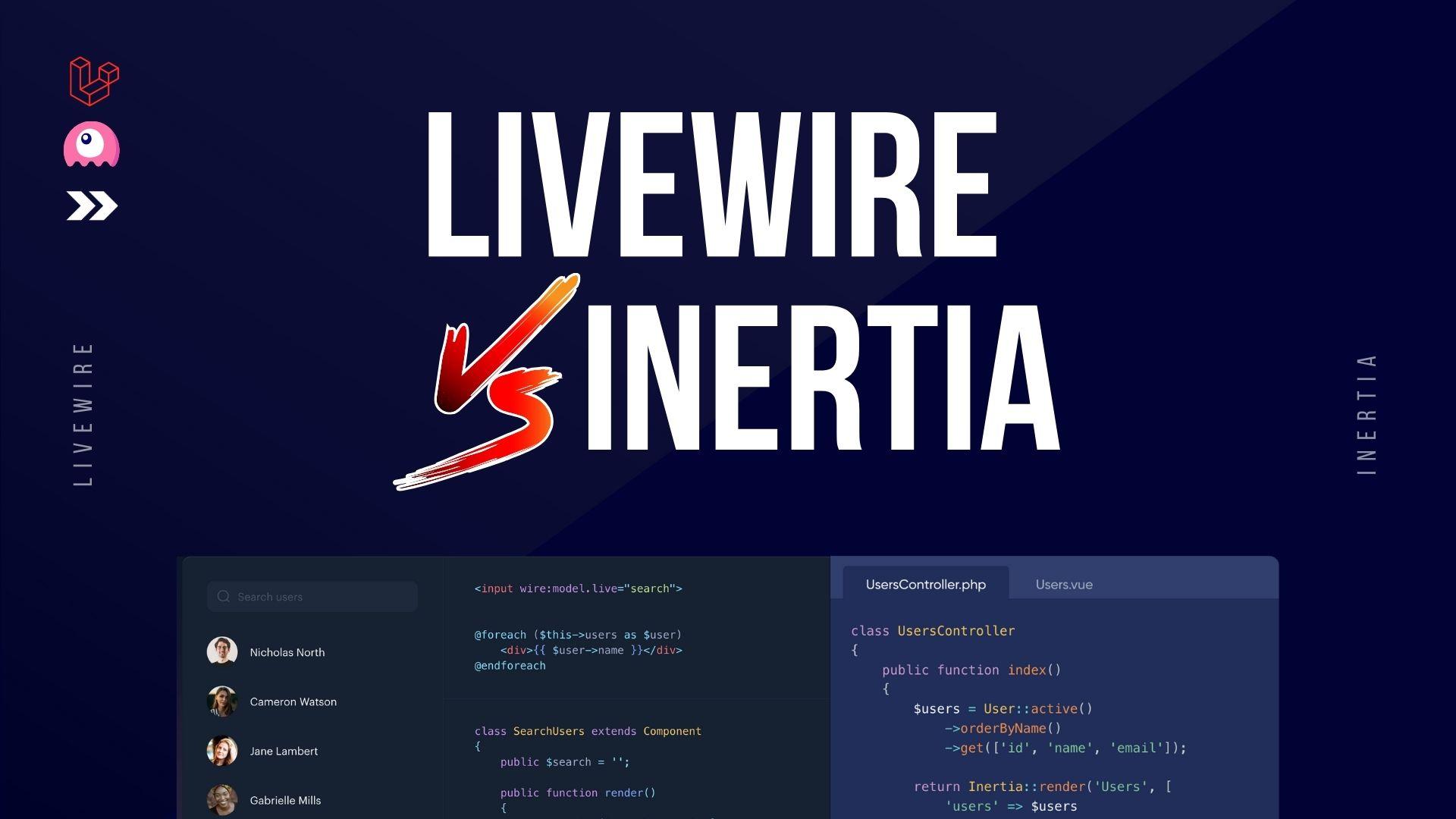When you start learning Laravel, you will also need to choose a stack that suits your needs and preferences. Livewire or Inertia? Both offer unique benefits and can change how you build your apps. If you find it tough to decide, worry not! I'm here to break it down for you, so you can make an informed decision.
Spoiler: they're both pretty awesome!
Think of Inertia as the friendly matchmaker between Laravel and your favorite JavaScript library, whether it's React, Vue, or Svelte. It seamlessly passes data from your PHP to a JavaScript object/framework.
Livewire is like a wizard that lets you create SPA-like magic without diving too deep into JavaScript. It uses server-side rendering and offers real-time updates. Paired with it's companion AlpineJS, you have the power to create rich-interactive web apps.
😎 Inertia Hits the Spot
Most folks will reach for Inertia because they're comfortable with a front-end framework like React, Vue, or Svelte. Inertia lets developers harness their existing powers and skills in these frameworks while seamlessly integrating with Laravel's powerful backend. Here are some reasons to choose Inertia:
- Seamless integration with React, Vue, or Svelte.
- Enables SPA-like experiences with server-side routing.
- Reuses front-end framework skills and components.
- Simplifies data handling between Laravel and JavaScript.
- Leverages modern JavaScript ecosystem and libraries.
🧙♂️ The Livewire Magic
Livewire is a game-changer. It offers a different approach to building dynamic SPA-like applications by keeping most of the logic on the server side. Pairing Livewire with its trusty sidekick AlpineJS gives you the ability to have a seamless conversation between the server and client. Here are some reasons you might want to reach for Livewire:
- Minimizes the need for JavaScript
- Leverages server-side rendering for better SEO
- Reduces complexity in state management
- Integrates tightly with Laravel features
- Facilitates rapid prototyping and development
🙈 Downfalls
No tech stack is without its quirks. With Inertia, you'll need to commit to a JavaScript framework, and state management can get pretty complex. On the flip side, Livewire might give you slower user interactions since it relies on server-side code. But hey, these downsides can be smoothed out with some careful planning and optimization.
✅ Which Should You Choose
In the end, the choice between Livewire and Inertia.js boils down to your project's specific needs and your team's expertise. Both are fantastic technologies designed to make your life easier and your apps more awesome.
🐌 Is Livewire Slow and bad for UX
Some folks might say Livewire leads to a "not-so-great user experience." Nonsense! A poor UX can happen with any framework if not done right. In order to make the user experience better in Livewire you will use AlpineJS on the front-end. Use Alpine for quick, on-the-fly interactions and Livewire for all the heavy lifting on the backend.
🌶️ My Hot Take
After working with Vue for a decade, I decided to dive-in head first with Livewire and I am loving it 😍 Easily passing data back and forth between the client and server has never been so enjoyable. If you haven't given Livewire a try yet, I highly recommend diving in – you might just fall in love with it too!
So, whether you go with Inertia or Livewire, remember: both paths lead to a more enjoyable and efficient developer experience 🤩


